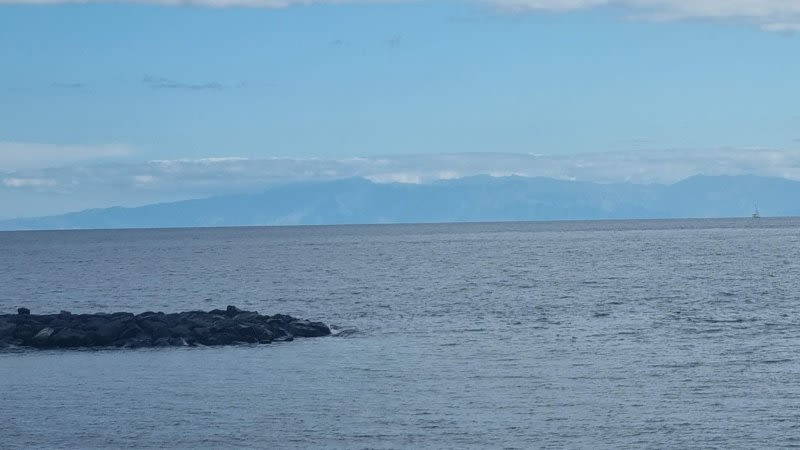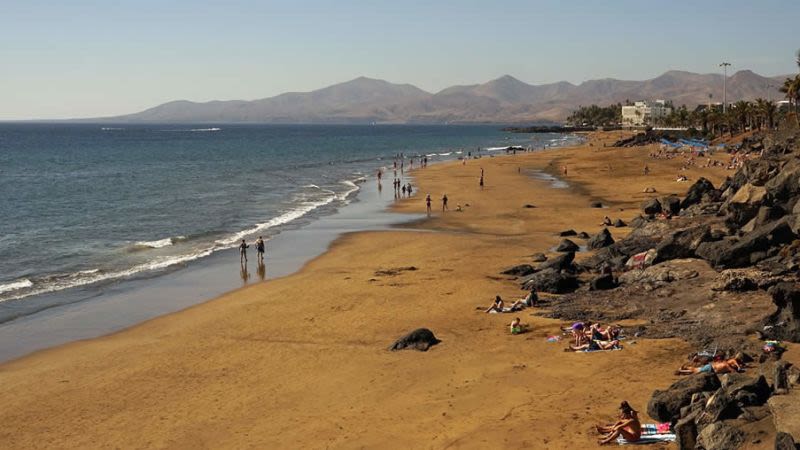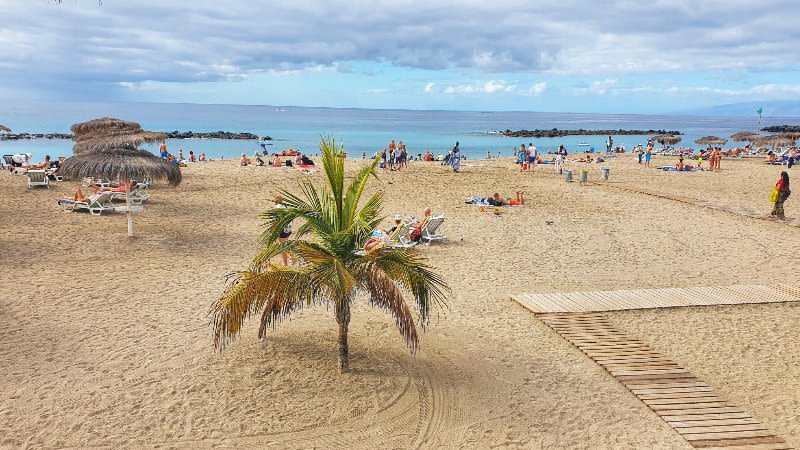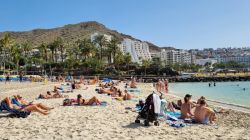Algal bloom in Tenerife and the Canary Islands in general

The microalgae are the cyanobacteria Trichodesmium erythronium, and major episodes relating them have happened in the Canary Islands in the summers of 2004, 2011 and, above all, in 2017, when massive algal blooms took place on the coasts of the Archipelago.
That episode generated a moment of alarm and panic among the local population, due to the lack of information in this regard, so the Public Health institutions issued a series of recommendations.
“The cyanobacteria that have appeared in Las Canteras, in the south of Gran Canaria, or on the coasts of Tenerife and La Gomera recur almost every year. There have been slightly colder years in which there have been less, but this particular one has generated a very large temperature anomaly, probably influenced by the El Niño process in the Pacific Ocean, which is giving rise to intense heat episodes that affect the sea. The fact that the temperature is so high and that the wind has dropped for a few days has caused cyanobacteria to proliferate”, explains Javier Arístegui, professor of Ecology at the University of Las Palmas de Gran Canaria (ULPGC).
How to identify massive algal blooms (microalgae)
The presence of massive blooms of microalgae (algal blooms) on beaches is easily identifiable with the naked eye, due to the following characteristics:
- Anomalous coloration of the water with spots of variable intensity and color (orange, brown, brown, bluish-green or whitish) and loss of transparency.
- Presence of "cream", lumps or spots on the surface of the water, of variable color and intensity and a more or less viscous, oily or sawdust appearance.
- As the microalgae decompose, an odor of variable and unpleasant intensity may appear.
Recommendations and protection measures
In general, and following the guidelines of the World Health Organization, upon detection of a microalgae bloom that affects a beach, the General Directorate of Public Health recommends in the affected areas:
- Refrain from bathing and avoid contact with the material deposited in the sand in areas with visible concentrations of algae or foam.
- Avoid positioning downwind to reduce the possible inhalation of aerosols on the shore.
For the practice of water sports or any other activity that involves immersion, neoprene garments must be worn that prevent water from coming into contact with the skin and whose openings fit well to prevent the entry of water, since the entrapment of microalgae between skin and garment increases contact time and effects. - After contact with a 'microalgae' bloom, it is necessary to shower or rinse thoroughly to remove any remains on the skin.
- Wash and dry clothing or material that has come into contact with the bloom.
- If any health effects are observed after exposure to a bloom, seek medical advice.
Since the arrival of this type of massive blooms of microalgae in the Canary Islands is not predictable, it is recommended that the organizers of recreational or sports activities on the beaches provide alternative solutions in their programming.
It is recommended to the town halls that, in the event that the presence of these massive blooms is detected in the bathing areas, they should install posters or warning signs for users that include a list of advice.
Information on the bloom of microalgae present on the Canary Islands coasts in 2017
After the episodes of 2004 and 2011, in 2017 the Canary Islands experienced new massive blooms of microalgae of the species Trichodesmium Erythraeum, a cyanobacterium whose arrival on the coasts depends exclusively on weather conditions, and has nothing to do with the existence or not of wastewater discharges.
It is a completely natural phenomenon, frequent in other areas of the planet with warmer waters, such as Australia, where citizens have learned to live with them. There, as in the Canary Islands, the only recommendation is not to bathe in the middle of the microalgae stains, being able to do it on the rest of the beach free of them, since the only effect on health is possible skin irritation.
Are all Canary Islands affected by algal bloom?
As we've already mentioned, this phenomenon can't be predicted as it is something that occurs naturally, so there is no way to say which islands can be affected by microalgae. No one can say for sure when or if there will be microalgae bloom in Gran Canaria, Tenerife, Lanzarote, Fuerteventura, or the rest of the archipelago.
In the summer of 2023, the microalgae is affecting the islands of Tenerife, Gran Canaria and La Gomera, where some beaches had to be closed for a short time, until the water was declared as safe for swimming again after tests were carried out.
The famous Las Canteras beach in Las Palmas de Gran Canaria has suffered these days from an abnormally high proliferation – bloom – of microalgae, a situation that has led the Red Cross service to raise the yellow caution flag. Las Canteras already experienced a similar episode in 2017.
These massive algal blooms can form both in waters close to the coast and in open waters where the tides and winds can group them, disperse them and move them away from or closer to the coast, where they can remain in sheltered areas for several days.
The unique orientation of El Confital Bay favors the arrival of these organisms carried by the wind and currents.
































